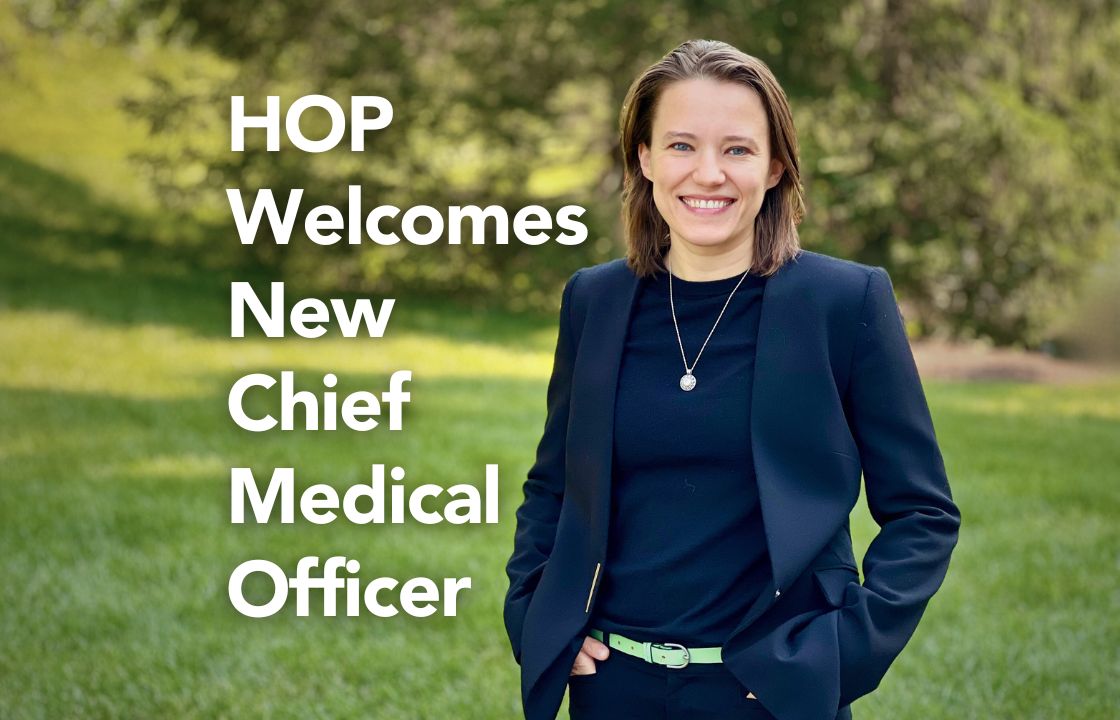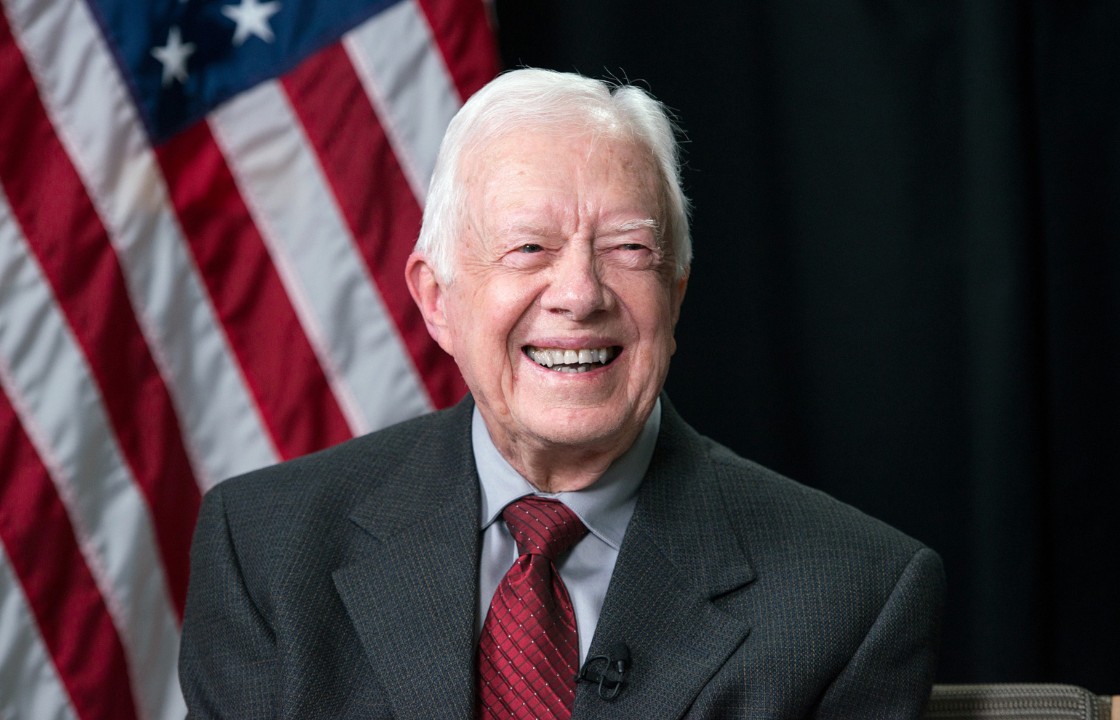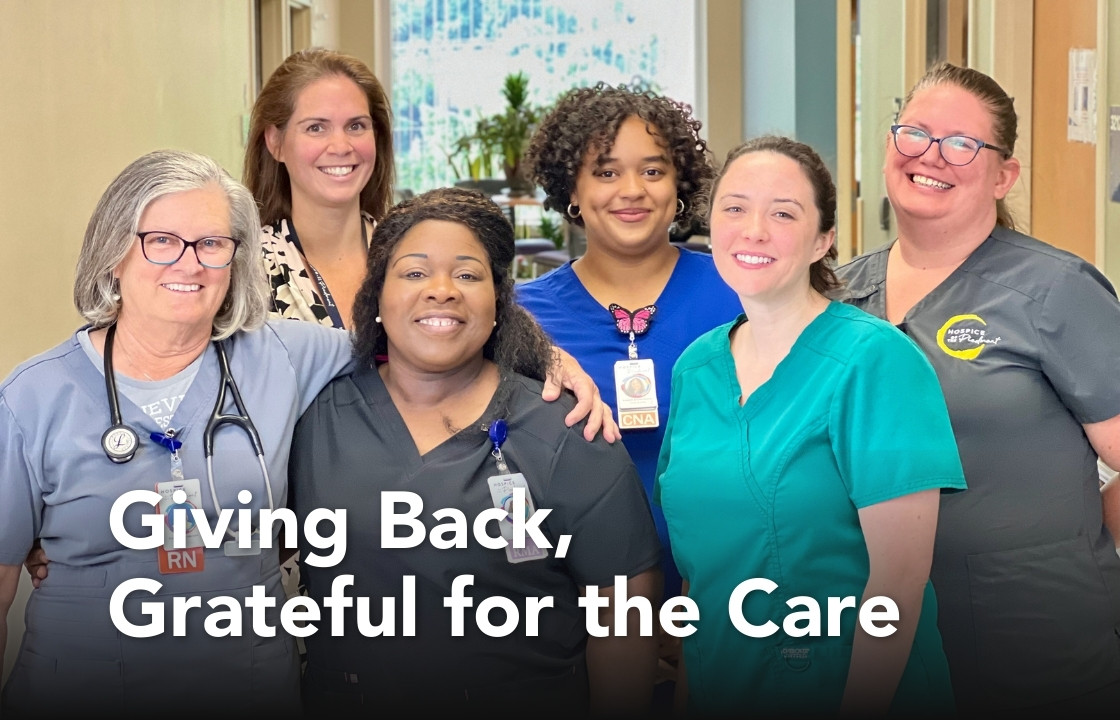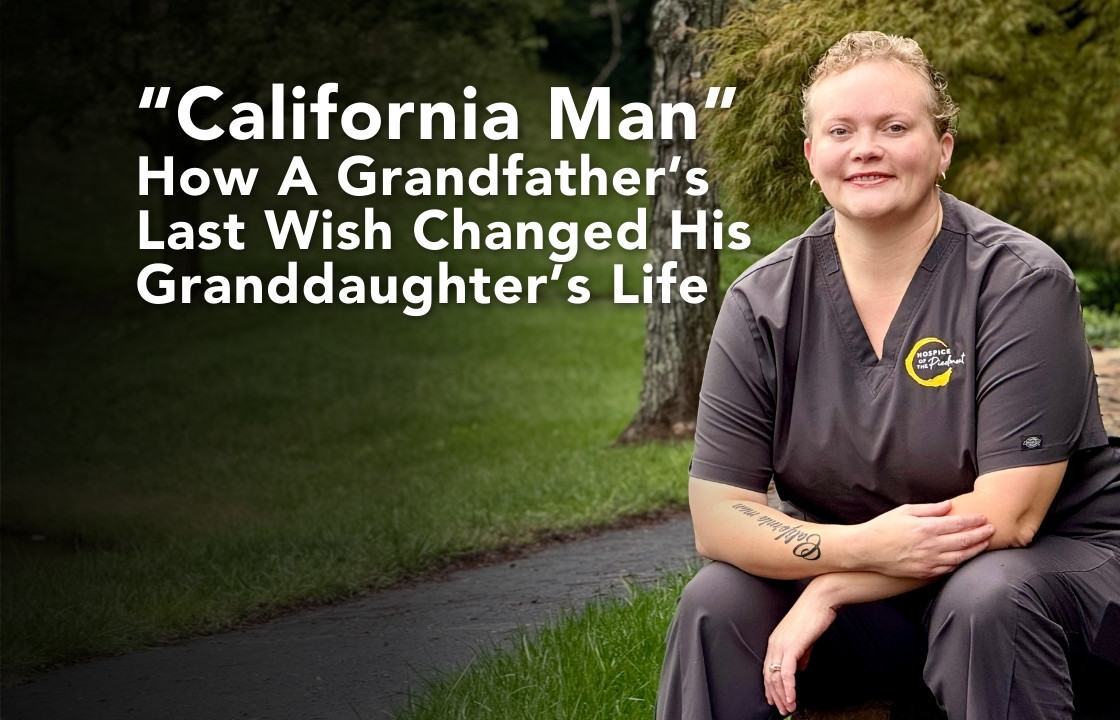Hospice of the Piedmont (HOP) is pleased to welcome Alina Fomovska, MD, HEC-C, as our new Chief Medical Officer. Dr. Fomovska joined our team earlier this year and has been working closely with outgoing CMO Dr. Tim Short, who recently retired. We are grateful for Dr. Short’s dedication and leadership, and we are excited to have Dr. Fomovska take over this vital role.
“As a physician, the highest compliment I could offer another doctor is that they’re somebody I would pick to take care of my family. And Alina is certainly someone I would choose to take care of my family,” said Dr. Short.
Dr. Alina Fomovska brings a wealth of experience and knowledge to her new role. She graduated from the Icahn School of Medicine at Mount Sinai in New York and completed her residency in Emergency Medicine at UC San Francisco. Later, she also completed a Hospice and Palliative Medicine Fellowship at the University of Virginia in 2020. She is dual-board certified in Emergency Medicine and Hospice and Palliative Medicine, and is certified as a Healthcare Ethics Consultant. You can learn more about her background here.
“We have been fortunate to have Alina on the team and are looking forward to the direction she will bring to HOP in the position of CMO,” said Hospice of the Piedmont CEO Ron Cottrell.
Born in Ukraine, Dr. Fomovska moved to the U.S. with her family when she was eight. She has lived all over the United States, including Michigan, Boston, Long Island, Chicago, New York, San Francisco, and, most recently, Philadelphia. But, she says, “My favorite place has been Charlottesville.”
We sat down with Dr. Alina Fomovska for a wide-ranging conversation about her background, goals, and some of the experiences that shaped her career. This interview has been condensed and edited for clarity.
What brought you to Hospice of the Piedmont?
I worked with Hospice of the Piedmont while completing my Fellowship in Hospice and Palliative Medicine at the University of Virginia. At that time, my family also fell in love with the place and the community of Charlottesville and Virginia, and we are thrilled to be back here again.
What has always resonated with me is how mission-driven Hospice of Piedmont is as an organization. When things get tough, going back to that mission is a powerful way to stay on the path. Hospice of Piedmont is so precious – because of the work that happens here, the people who make up this organization, their heart and dedication, and how the mission permeates this space.
What are your priorities as Chief Medical Officer?
First and foremost, continue doing what Hospice of Piedmont does best: provide exceptional end-of-life care to our community, and transform the way folks experience serious illness, dying, and grief.
Secondly, I want to increase the depth of the population we serve. Hospice is such a wonderful service to which people are entitled, and it is unjust that members of our community haven’t been able to access it.
And finally, continue to support our staff, and ensure we deliver care in such a way that the folks who are doing the work are strong, inspired, and well.
Medicine is tough right now, and everyone is tasked to think broadly, creatively, and thoroughly about supporting our patients and one another.
How did your interest in medicine begin?
I began to love medicine in college because of what we describe as the intertwining of Art and Science. I come from a family of scientists and have always been excited about science, learning, and growing. At the same time, I loved the additional depth of the art of medicine – the humanity, history, ethics, and justice.
Medicine reaches into just about every aspect of our lives, and I was excited to engage with the world on that level.
You attended the Icahn School of Medicine at Mount Sinai in New York. How did that experience shape your perspective on practicing medicine?
I had the privilege of learning about taking care of patients at the end of life from some of the smartest and most thoughtful people in the field. I am grateful that I got to see the role that medicine can play at the end of life early on in my education.
We sometimes talk about the concept of good death, which might seem like an oxymoron or, at the very least, means different things to different people. But at the end of the day, death is something that happens to everyone, and being able to influence what it looks like, even a little bit (even if it means doing less rather than more), is a humbling and awe-inspiring experience.
I’m grateful that I got to learn from those “good deaths” – when there was peace and calm, a celebration of life, and freely-expressed joy and sadness. That level of peace in a hospital room is unusual and inspiring.
Is that the reason you chose to work in hospice?
Yes! I love that in the world of hospice and palliative medicine, we get to ask, “What is most important to you” and have that become the focus of our efforts. The end of life is an incredibly precious time, and working to protect and support that – for patients, their families, and everyone else involved in caring for a person – is an extraordinary and rewarding experience.
You are dual-board certified in Hospice & Palliative Medicine, plus Emergency Medicine. Do you see a connection between those two specialties?
Absolutely! While at first glance, it might seem like Emergency Medicine and Hospice and Palliative Care are on opposite ends of a spectrum, I very much see these two fields as intertwined.
First of all, folks call 911 and come to the hospital when they are scared, in pain, short of breath, and just need help. Sometimes (often), aggressive and invasive treatments that prolong life are most appropriate. But other times, it means being ready to care for someone in a different phase of life.
We need to be prepared to help, no matter who we are helping or what kind of help they need. Patients shouldn’t be afraid that their end-of-life wishes wouldn’t be heard or respected.
When you start thinking about the overlap between the work of Emergency Medicine and Hospice and Palliative Medicine, you realize just how broad that overlap is. Both specialties focus on managing symptoms (like pain, anxiety, nausea, shortness of breath, and agitation). They both require us to deliver hard news and walk along with patients and families as they receive challenging information. They oblige us to manage transitions in health, and sometimes that means caring for someone as they are dying. And finally, in both specialties, we always work in a team of nurses, doctors, social workers, chaplains, technicians, specialists, and coordinators.
That’s interesting. Do you see any significant differences between Emergency and Hospice/Palliative Medicine?
I would say the biggest difference is usually just the timeline – all those conversations, moments, and interventions have to happen a little faster in the Emergency Department than in the home, clinic, or inpatient unit.
In Emergency Medicine, you need to be ready for whatever and whoever comes through that door – at any time, day or night, weekend or holidays, and you don’t necessarily get a “heads up.” And in many ways, the same things happen at the end of life. We don’t typically get to choose the time, place, or circumstances – all we can do our best to be ready for whatever is asked of us.
Final question: In our new advertising campaign, we ask, “If you had six months to live, what would you do?” So, I have to ask, what would you do?
I would love to be with people I love, my friends and my family. Add some good food, good music, good books, and beautiful mountains – well, that would just be lovely.



